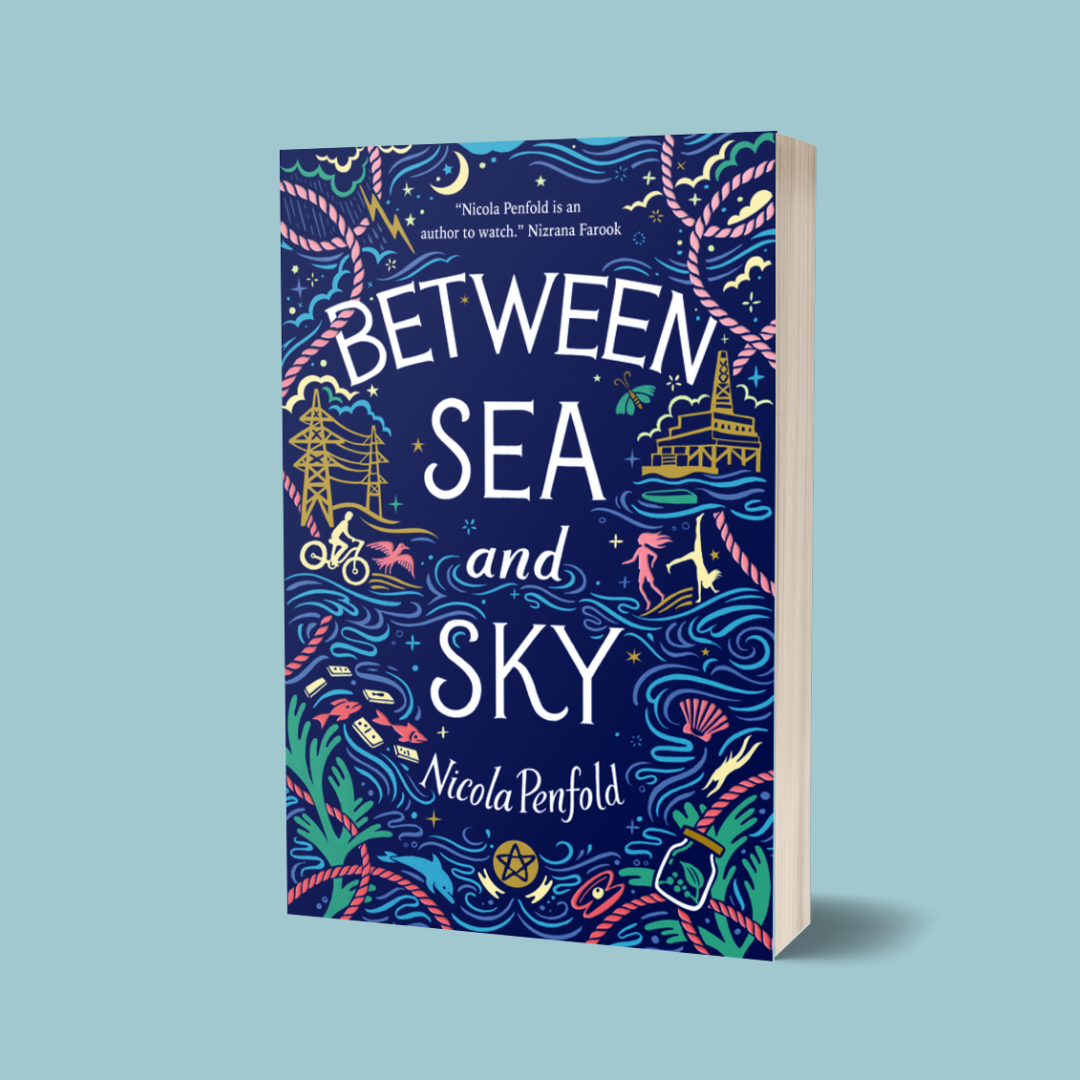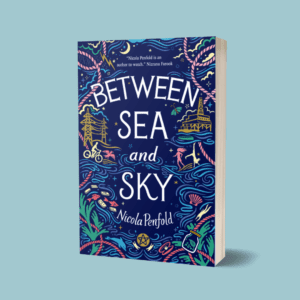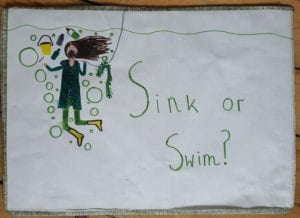 OTBM sampler_2023
OTBM sampler_2023
Summer Lanchester
Yomi and the Fury of Ninki Nanka – sneak peek at chapter 1!
 Chapter 1 Yomi and the Fury of Ninki Nanka by Davina Tijani and Adam Douglas-Bagley
Chapter 1 Yomi and the Fury of Ninki Nanka by Davina Tijani and Adam Douglas-Bagley
You can pre-order your copy of Yomi and the Fury of Ninki Nanka here!
Tourmaline and the Island of Elsewhere – A Q&A with Ruth Lauren

When Tourmaline’s mother goes missing on a search for precious artefacts, Tourmaline sets off to find her with her best friend George, her new friend (former foe) Mai and her limitless determination. On their adventure, they encounter a band of female pirates, a maze of talking trees and a series of challenges that test the children and their friendship. But will it be enough to reunite Tourmaline with her mother?
The first book in a fun, feminist fantasy adventure series, with a protagonist that flies off the page and into readers’ imaginations. Perfect for fans of Katherine Rundell, Vashti Hardy and Abi Elphinstone.
If you’d like to find out more about the author behind Tourmaline and the Island of Elsewhere, check out Ruth Lauren’s Q&A below:
What is Tourmaline and the Island of Elsewhere about?
It’s about a very determined girl who has to launch a rescue mission when her intrepid explorer mother goes missing. It’s also about friendship and thinking about right and wrong and how it’s not always straightforward to tell the difference – but mostly it’s a fun adventure.
Tell us a bit more about the world Tourmaline lives in?
Tourmaline has lived all of her life in Pellavere University where her mother works as an artefact hunter, but she’s about to burst out into a much bigger world where she’s going to sail the seas, discover a very strange island and learn that magic exists.
What are you most excited to share with readers of your new children’s book?
I really hope readers will love Tourmaline and her friends (and possible foes) and I can’t wait for them to meet a certain Captain and explore the very unusual island of Elsewhere. And last, but definitely not least, I’m excited to share the beautiful and striking cover by artist Sharon King-Chai. It’s stunning!
What children’s books would you recommend to young readers that have entertained and inspired you?
So many! I’ll restrict myself to a few favourites I’ve read very recently. For the most wonderful fantasy, I loved Utterly Dark by Philip Reeve, the Monsters of Rookhaven books by Padraig Kenny and Gallant by V.E. Schwab. The Five Realms series by Kieran Larwood is brilliant. Anything by Lucy Strange is fantastic, as is Hilary McKay. And two very different books I enjoyed for very different reasons – When the Sky Falls by Phil Earle and Wed Wabbit by Lissa Evans. I’ll leave it there or I’ll be recommending books forever.
Any tips for aspiring writers?
Read. Read everything. Read all the time. Nothing will make you a better writer than reading. And when you start writing, keep going. If you want to be a writer, you have to be very persistent and never give up – a bit like Tourmaline!
Bringing Old Friends to Life by Bryony Pearce

WARNING – This post contains spoilers for Savage Island
When I went to the Wirral Book Awards with my standalone horror novel, Savage Island, I wasn’t expecting to win, but I love a good book award, especially those voted for by young readers, so I went for the craic, as they say.
My performance there ended with a Q&A, during which one boy put up his hand and asked if there was going to be a sequel.
Now, as Savage Island was written as a standalone horror novel, you can imagine how many survivors there were (I’ll give you a clue – more than zero, less than two!). This would make writing a sequel extremely difficult. I assumed he was joking.
Laughing, I threw his question back to the crowd. ‘Who else wants a sequel?’
Hands flew up. So many hands.
Hang on, were they serious?
‘Do you mean a sequel or a prequel?’
‘Sequel!’
‘With the same characters or different ones?’
‘The same ones!’
This audience of avid young readers wanted me to write a sequel with the same characters … who were all (bar one) meant to be dead.
I returned to my car clutching my prize (reader – I won the award!) and thinking. Was there any way I could make this happen for them? And did I want to?
Well, there did seem to be more I could explore in this world. Savage Island was organised by a psychopathic billionaire, seeking more psychopaths to expand his empire, over whom he would have control, via means of recordings that showed them committing atrocities.
But what if he wasn’t just finding these psychopaths via means of personality testing, what if he’d been trying to createthem? What if Savage Island was just part of a programme that Grady, Ben and Will didn’t know they were inside?
And what happens when Grady, the psychopathic anti-authoritarian conspiracy theorist ends up forced to work in a suit for a billionaire?
Who are the other teens in the ‘graduate recruitment programme’? Other survivors of ‘the island’ or does Gold have several different ‘recruitment campaigns’ running?
These thoughts stuck in my head. So, I started to wonder, how could I resurrect Ben and Lizzie?
At the end of Savage Island Ben wakes on a beach, to see the bodies of his brother, Will, and the girl he loves, Lizzie. Then Grady walks towards him with malicious intent. I had intended this to mean that Grady kills Ben, but what if he didn’t? What if Ben survives the encounter?
But how?
Then I thought about who Grady is – psychopathic, anti-authoritarian conspiracy theorist – would Grady want to be taking orders from an old white guy for the rest of his life? Wouldn’t he see the advantage in keeping Ben alive – Ben who now hates Gold and will do anything to destroy him?
So, I decided to, not only have Ben survive, but to have Grady save him.
Throughout Savage Island, Grady has been the go-to guy for medication. His doctor father sent him with every possible pill and painkiller, so it didn’t seem a stretch that he would be able to feed Ben some sleeping tablets, which would knock him out long enough for Gold’s cameras to be satisfied that Grady had done his job.
Neither is Ben stuffed with medical knowledge. Could he really know that Lizzie was dead, just by looking at her? What if Grady had done the same with her?
So, I had a way to save Ben and Lizzie. That gave me three characters to start the sequel with. Grady, working for Gold, but trying to find a way to get out and Ben and Lizzie in hiding, waiting for their chance to destroy him.
It was brilliant to be able to write more about these characters I thought I’d lost (killing off characters is something I do, only regretfully), to explore more about who they are and who they have become after surviving the island (they have changed in big ways).
So, thank you to the students at the Wirral Book Award who inspired me to resurrect these old friends and continue their story. I’m glad I was able to do so for you (and for me)!
If you want to know more about Cruel Castle, or any of Bryony’s other books, please visit her website: www.bryonypearce.co.uk, or follow her on Twitter or Instagram @BryonyPearce or TikTok @BryonyVPearce
Drowned Worlds In Children’s Fiction by Nicola Penfold


Between Sea and Sky is set in an imagined future, after sea levels have risen and many species have died out. On the flat south east coast of England, a small mainland population lives in a concrete and metal compound, built on stilts to protect it against flooding. The cooling tower of an old coal fired power station grows stacked rows of salad and vegetable plants, in artificial solutions and light. And vast fields of solar panels and pylons stretch inland, sending valuable electricity to the governing Central District.
Out at sea, a small family – one dad, two sisters – make their living on a ramshackle old oyster farm. A rusted cruise liner, now a prison ship, takes anyone who clocks up too many civil disobedience points on the tightly controlled mainland, where rules and restrictions are a way of life. This is my vision of a drowned Earth.
I’ve always been drawn to post-apocalyptic worlds. A small group of survivors in a changed landscape. One of my favourite books growing up was Children of the Dust by Louise Lawrence, set in the aftermath of a nuclear war. It’s bleak reading now, going back to it all these years later, but at the time I adored it.
Where the World Turns Wild, my first book, was set in a world after a pandemic had locked people in cities, away from the natural world. Between Sea and Sky is post climate change and biodiversity loss (these crises come hand in hand). It’s a scary vision, but the statistics are scary too. Sea levels are thought to have risen 16cm since the start of the twentieth century, but by far the biggest rises have been in recent decades. Levels are thought to be rising 3.6mm a year, and this is predicted to get faster still. If you go to https://coastal.climatecentral.org you can see what areas will be underwater by when, unless we take drastic action, and not only stop churning out greenhouse gases, but invest in solutions to reabsorb them.
I’m not of course the first children’s writer to write a flooded future. Marcus Sedgwick’s Floodland came out in 2000 and this short, brilliant, visionary book is still used regularly in schools. East Anglia is underwater and survivors live precariously on tiny newly formed islands, like that of Ely Cathedral (‘Eeels Island’). In a world of rival tribes, everything has become about survival.
Marcus Sedgwick said recently, writing on a new Climate Fiction League website, set up by writer Lauren James, that “just because we might think something is well-known, accepted scientific fact, doesn’t mean everyone does… That’s why it’s very important that we continue to speak (even at risk of boring ourselves) about the vitally important matters that need to change in the world – in this case, climate change. And of course, the best way to do this is to work with younger people.”
Fiction can show futures we want to avoid. But this material is not just futuristic. In Swimming Against the Storm by Jess Butterworth, Eliza and her sister Avery live in a fishing village in the bayous, the swamplands of Louisiana. This is an area under massive threat from rising sea levels and subsidence. It’s estimated that a football field of coastal wetlands is lost every hour into the sea in Louisiana. Swimming Against the Storm brings into sharp focus what this means, for this vitally important habitat, so rich in biodiversity that it sings with life in the book. And for the communities that live here, and make their living from the shrimp and oysters which have traditionally been so plentiful, the sadness at what’s being lost is palpable. The book draws attention to the added stresses that oil and gas companies are putting on the bayous, as they dig out new canals.
Bren McDibble is a New Zealand writer living in Australia, whose books have featured a world without pollinators (How to Bee), a world after a wheat fungus has destroyed cereal crops and caused famine (Dog Runner) and her own vision of a drowned world (Across the Risen Sea). I asked Bren why she chose this last topic.
“Sea inundation is a process that’s already a very real threat to so many cities around the world. By setting a story after a global sea rise event, I get to create a survival story in a new world. Seeing our world breaking up is now our scary daily news and I like to look beyond that. What comes next? I feel it empowers young readers to cope with an environmental topic if I focus on the survival and show characters thriving in a new (but changed) world.”
Across the Risen Sea pushes a message about low-impact lives – “living gentle lives” that will appeal to environmentally conscious readers (most young people today!). But I loved the playfulness too, and the inventiveness, in which this new world is rendered. There is a scene where the main characters, Neoma and Jag, climb the stairwells of a flooded office tower, its top floors poking out of the water. They’re looking for salvage. And in the book’s opening pages, the head of a baby doll, home to a hermit crab, clambers over sea walls made of old car frames. They live in ‘Rusty Bus’. These kinds of details were some of the things I most enjoyed writing in Between Sea and Sky – seeing what’s left of our world and what the characters make of it. One of my characters, Pearl, collects washed up broken dolls, and remakes them as mermaids, to release back into the sea. Her sister, Clover, tightropes the backbone of a beached whale skeleton.
It’s a fine balance sometimes, writing something intriguing and inviting, a world where readers want to spend time, and sounding the alarm call loud enough. I was writing Between Sea and Sky last spring. We were all in COVID lockdown, and it felt important to pack the story full of hope. Hope comes in two forms in the book. My child characters who notice things adults are too busy and worn down to see. And the natural world, which has so much capacity to heal and help us, even now, after we’ve done so much to destroy it. I’m going to finish with a climate strike placard one of my daughters made last year. I hope we swim!

For other drowned worlds in children’s fiction try:
(for older readers / middle grade)
Flood World by Tom Huddleston
Orphans of the Tide by Struan Murray
(for young adults)
The Gracekeepers by Kirsty Logan
Useful Idiots by Jan Mark
Also check out https://climate-fiction.org/ Climate Fiction Writers League